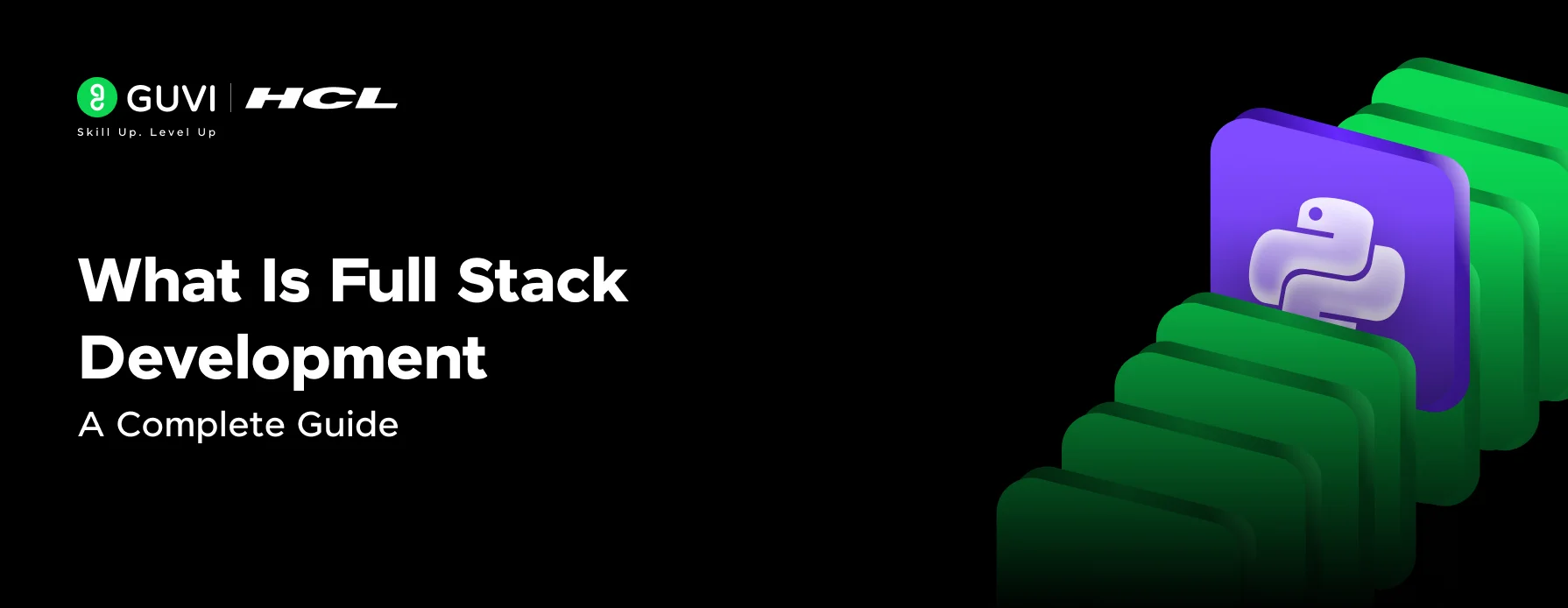
What is Full Stack Development (FSD)? A Complete Guide
Jun 30, 2025 5 Min Read 16450 Views
(Last Updated)
One of the most sought-after jobs in this current decade is full-stack development. If you are looking for a career in full-stack development, you must first understand the basics and get yourself prepped.
In this blog, we’ll be reading about full-stack development, its components, languages used, and the salary offered to full-stack developers making you perfectly equipped. This blog covers every minute detail that you should know about full-stack development.
So, without further ado, let’s get started:
Table of contents
- What is Full Stack Development?
- Why Should You Care About Full Stack Development?
- Components of Full-stack Development:
- What does a full-stack developer do?
- What languages do Full-stack developers use?
- Front-End Development:
- Back-End Development:
- Full-stack Developer Salary in India
- The Journey to Becoming a Full-Stack Developer
- Challenges in Full Stack Development
- Conclusion
- FAQs
- Q1. What is FSD in a full stack?
- Q2. Is full-stack development the same as web development?
- Q3. Can I learn full stack in 1 month?
- Q4. Do full stack developers need to know design?
- Q5. Can you become a full-stack developer without a degree?
- Q6. Is full stack development in demand?
What is Full Stack Development?
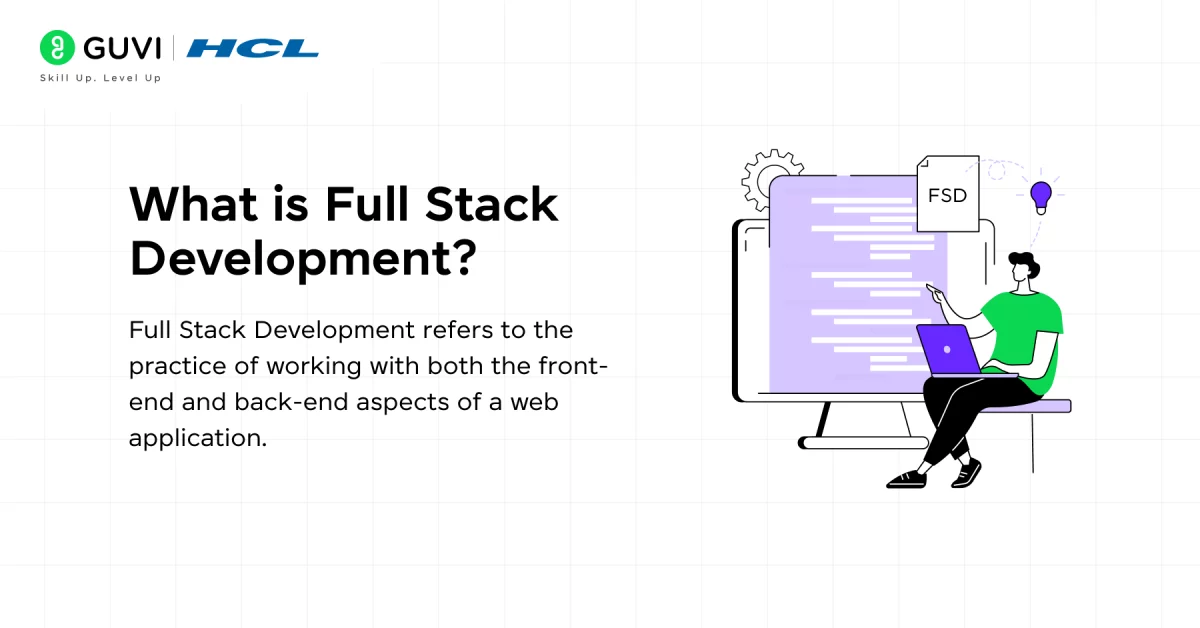
Full Stack Development refers to the practice of working with both the front-end and back-end aspects of a web application.
At its core, Full Stack Development is all about being versatile. It refers to the development of both front-end (the part of the application you see and interact with) and back-end (the server, database, and application logic) parts of a web application.
In simpler terms, a full-stack developer is someone who can build a website or application from start to finish, managing everything from the look and feel of the user interface to the functionality behind the scenes.
Full-stack developers create end-to-end solutions, from designing user interfaces to managing databases and server configurations.
Why Should You Care About Full Stack Development?
You might be wondering, why is Full Stack Development such a big deal. Well, for starters, having a full-stack skill set opens up a world of opportunities.
Companies love hiring full-stack developers because they can tackle both front-end and back-end tasks, which means fewer people to manage and more streamlined projects.
Being proficient in full-stack development also means you have a better understanding of how different parts of a web application work together. This makes you more adaptable and capable of troubleshooting issues that might arise in either the front-end or back-end.
Plus, if you’re someone who enjoys variety in your work, full-stack development offers just that, no two days are the same, and there’s always something new to learn.
Components of Full-stack Development:
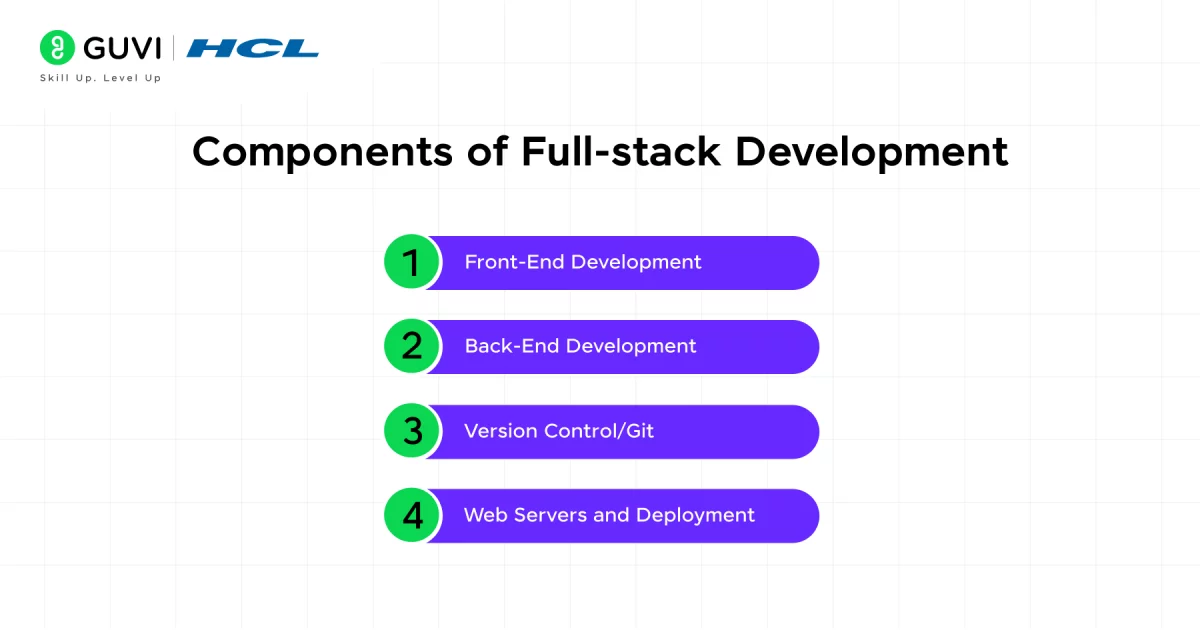
- Front-End Development:
- User Interface (UI) Design: Full Stack Developers are adept at crafting visually appealing and user-friendly interfaces using HTML, CSS, and JavaScript.
- Client-Side Programming: They implement client-side logic, enabling dynamic and interactive web experiences through frameworks like React, Angular, or Vue.
- Back-End Development:
- Server-Side Programming: Full Stack Developers manage server-side logic using languages like Python, Ruby, Node.js, or Java to handle data processing, authentication, and server communication.
- Database Management: Proficiency in database systems like MySQL, MongoDB, or PostgreSQL is crucial for storing, retrieving, and managing data efficiently.
- Version Control/Git:
- Full Stack Developers use version control systems, like Git, to track code changes collaboratively, ensuring a smooth development workflow and easy collaboration among team members.
- Web Servers and Deployment:
- Understanding web servers (e.g., Apache, Nginx) and deployment strategies is essential for Full Stack Developers to launch and maintain applications in production environments.
What does a full-stack developer do?
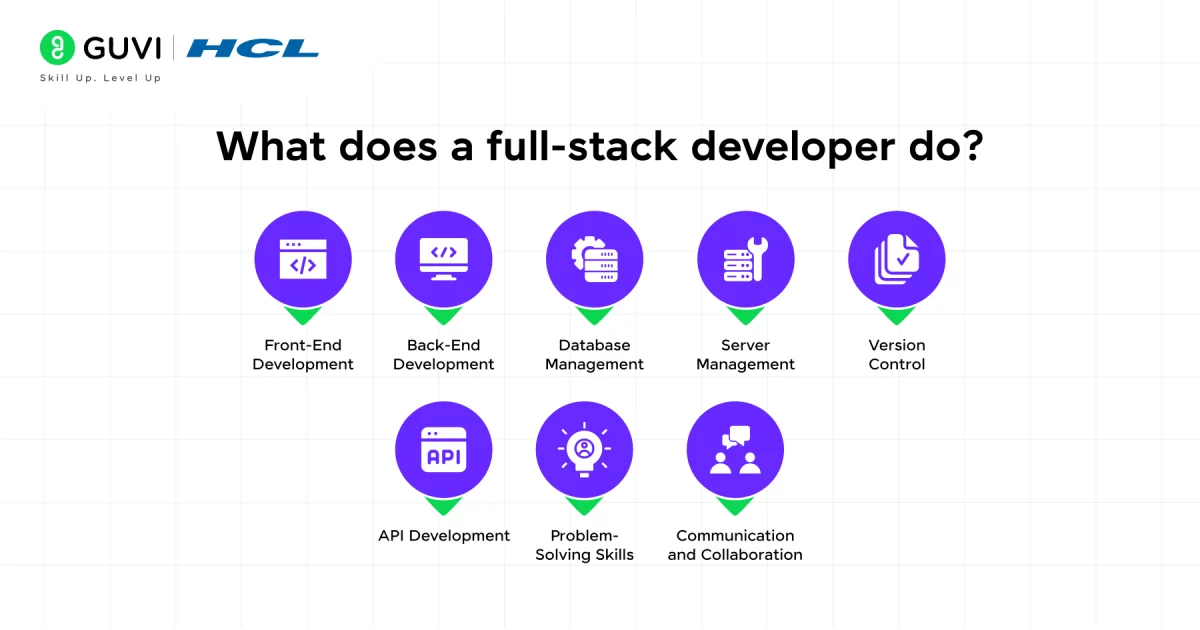
When you’re working as a full-stack developer, you’re essentially a one-person show. You handle everything from designing user-friendly interfaces to setting up databases and writing the code that powers the whole application.
Let us see more about the responsibilities of a full-stack developer:
- Front-End Development:
- Proficiency in HTML, CSS, and JavaScript for creating visually appealing and responsive user interfaces.
- Experience with front-end frameworks such as React, Angular, or Vue.js to build dynamic and interactive web applications.
- Back-End Development:
- Expertise in server-side programming languages like Node.js, Python, Ruby, Java, or PHP to handle server logic and data processing.
- Knowledge of database management systems (DBMS) like MySQL, MongoDB, PostgreSQL, or others for efficient data storage, retrieval, and management.
- Database Management:
- Ability to design and interact with databases, ensuring proper data storage, retrieval, and management.
- Server Management:
- Understanding of web servers (e.g., Apache, Nginx) and deployment environments to launch and maintain web applications in production.
- Version Control:
- Proficient use of version control systems, such as Git, to track code changes and collaborate effectively with other developers.
- API Development:
- Creation and consumption of APIs (Application Programming Interfaces) for communication between the front-end and back-end components.
- Problem-Solving Skills:
- Strong analytical and problem-solving abilities to identify and resolve issues across the entire development stack.
- Communication and Collaboration:
- Effective communication skills to collaborate with other team members, including designers, other developers, and stakeholders.
What languages do Full-stack developers use?
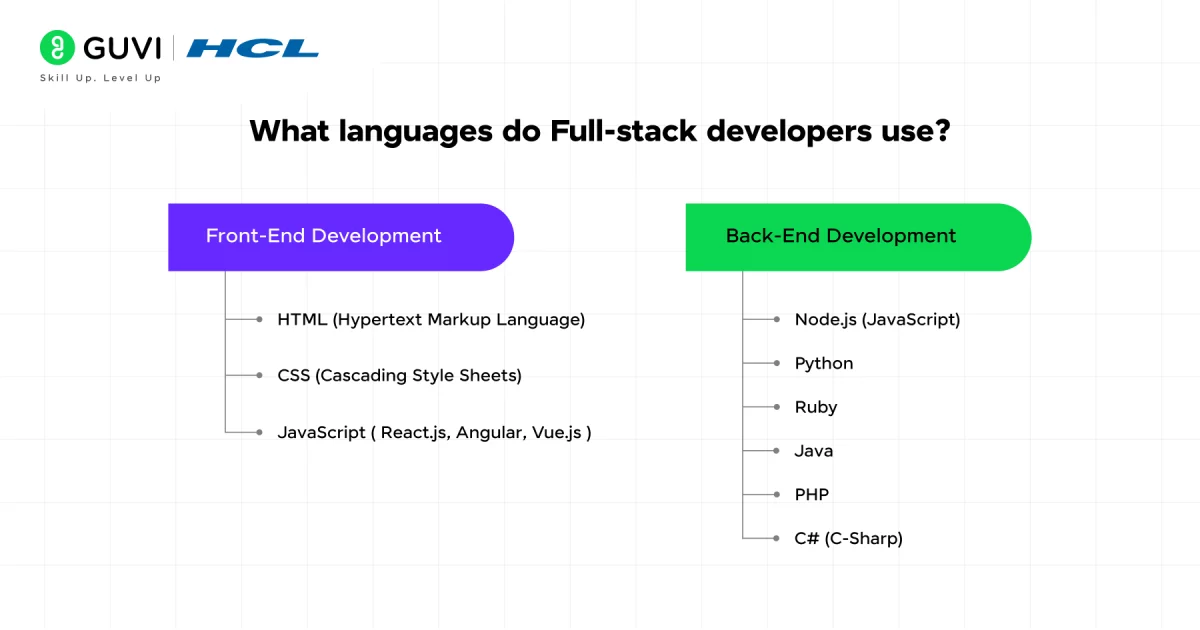
Full Stack Developers use a combination of front-end and back-end programming languages to create end-to-end solutions for web applications. The specific languages can vary depending on project requirements, personal preferences, and the technologies used within a development stack.
Full-stack developers use different tools and programming languages for front-end development and back-end development. Let’s read about them:
Front-End Development:
- HTML (Hypertext Markup Language): The standard markup language for creating the structure of web pages.
- CSS (Cascading Style Sheets): Used for styling and formatting HTML elements, enhancing the visual presentation of web pages.
- JavaScript: A versatile scripting language that enables dynamic and interactive behavior on the client side. Popular JavaScript frameworks and libraries include:
- React.js: Developed by Facebook for building user interfaces.
- Angular: A framework maintained by Google for building dynamic web applications.
- Vue.js: A progressive JavaScript framework for building user interfaces.
Back-End Development:
- Node.js (JavaScript): A server-side JavaScript runtime that allows developers to use JavaScript for server-side scripting. It is commonly used with Express.js for building web applications.
- Python: A versatile and readable programming language used for back-end development with frameworks such as Django and Flask.
- Ruby: Known for its simplicity and productivity, Ruby is often used with the Ruby on Rails framework for building web applications.
- Java: A widely used, object-oriented programming language that can be employed for building scalable and robust back-end systems.
- PHP: A server-side scripting language commonly used for web development, often with frameworks like Laravel and Symfony.
- C# (C-Sharp): Developed by Microsoft, C# is utilized with the ASP.NET framework for building web applications.
Full-stack Developer Salary in India
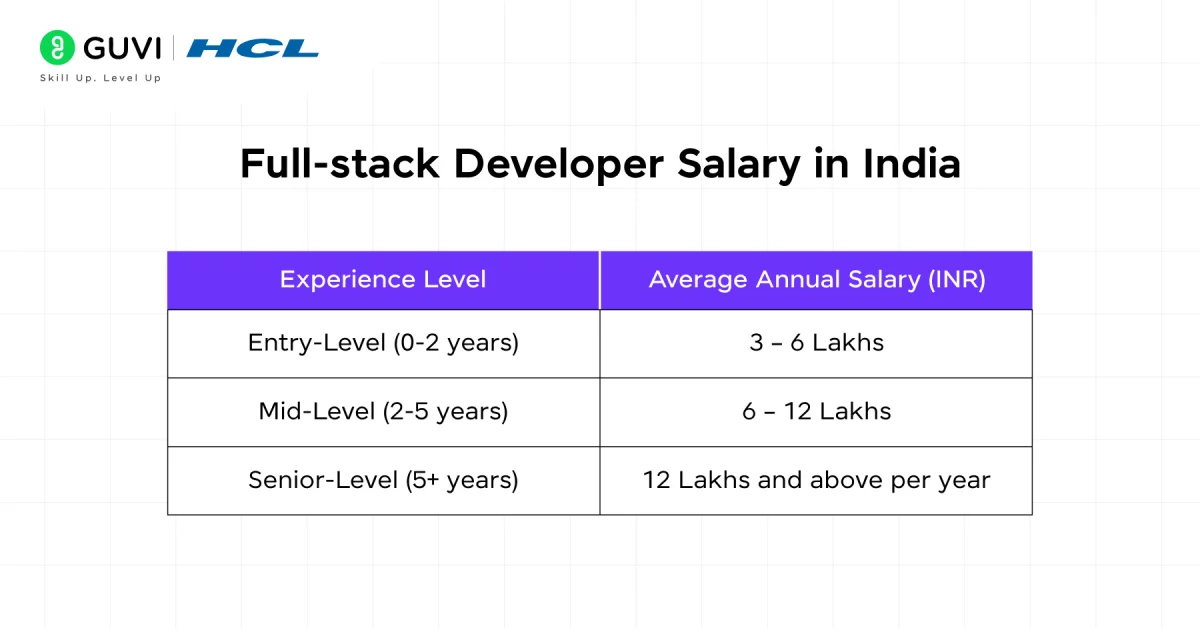
The salary of a Full Stack Developer can vary significantly based on several factors, including experience, location, education, the size of the company, and the specific technologies and languages involved. Let’s read about the full-stack developer salary in India:
- Entry-Level (0-2 years of experience):
- ₹3,00,000 – ₹6,00,000 per year
- Mid-Level (2-5 years of experience):
- ₹6,00,000 – ₹12,00,000 per year
- Senior-Level (5+ years of experience):
- ₹12,00,000 and above per year
Note: The data given above are as per the AmibitionBox.
The Journey to Becoming a Full-Stack Developer
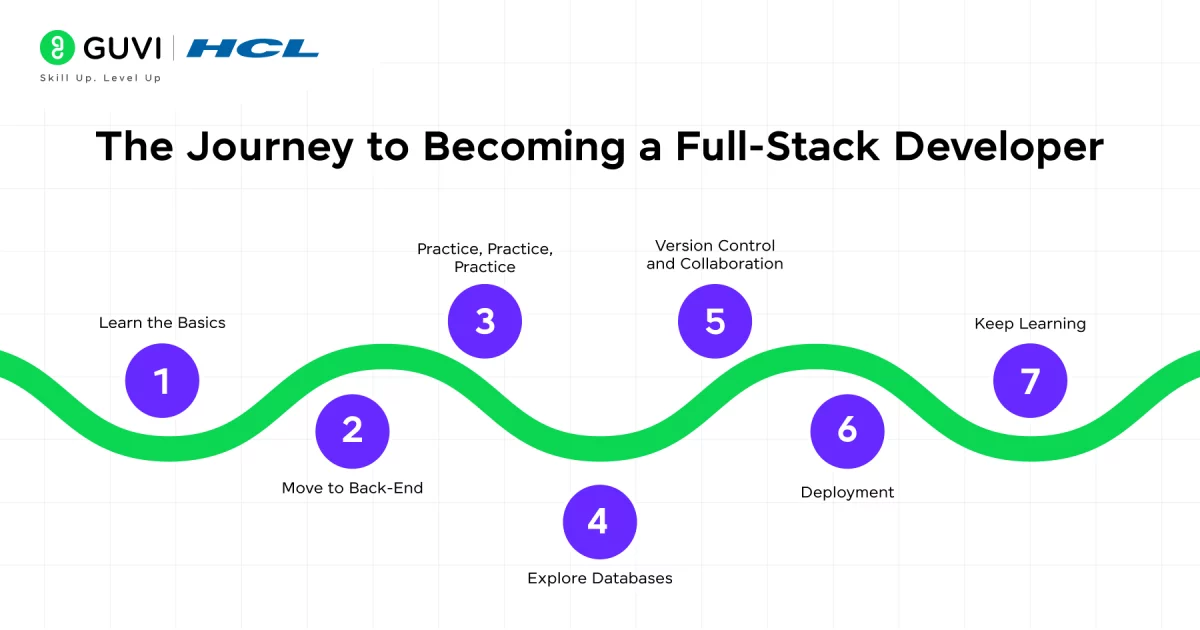
If you’re considering a career in Full Stack Development, the journey can be both challenging and rewarding. Here’s a step-by-step approach to help you get started:
- Learn the Basics: Start with the fundamentals of front-end development. Get comfortable with HTML, CSS, and JavaScript. There are plenty of online resources, tutorials, and courses to help you get started.
- Move to Back-End: Once you’re confident with front-end development, start learning a back-end programming language. Node.js is a popular choice for beginners, especially if you’re already familiar with JavaScript.
- Practice, Practice, Practice: Build your own full-stack development projects. Start with simple web applications and gradually take on more complex ones. The more you practice, the more you’ll understand how the front-end and back-end work together.
- Explore Databases: Learn how to work with databases, both SQL and NoSQL. Start by integrating a database into one of your projects.
- Version Control and Collaboration: Get comfortable using Git for version control. Try collaborating with others on projects to get a feel for working in a team environment.
- Deployment: Learn how to deploy your applications to the web. This could be as simple as using GitHub Pages for front-end projects or diving into cloud services like AWS for full-stack projects.
- Keep Learning: Full-stack development is constantly evolving. Stay up-to-date with the latest technologies, frameworks, and best practices. Join developer communities, attend workshops, and continue building your portfolio.
Challenges in Full Stack Development
While Full Stack Development is rewarding, it comes with its own set of challenges. Here are a few you might face:
- Keeping Up with Technology:
The tech world evolves rapidly. New frameworks, tools, and best practices emerge constantly, making it challenging to stay updated with both frontend and backend trends. - Managing Workload:
As a full stack developer, you’re expected to juggle tasks across both the frontend and backend. This can sometimes feel overwhelming, especially in fast-paced projects. - Balancing Expertise:
It’s hard to become an expert in both frontend design and backend logic. You might feel stretched thin, trying to achieve mastery in multiple areas. - Debugging Complex Systems:
Full stack projects often involve many interconnected parts, making it tricky to identify and resolve issues that span the frontend and backend. - Time Management:
Handling both sides of development can make it difficult to allocate time effectively, especially when deadlines are tight. - Collaboration with Specialists:
When working with dedicated frontend or backend developers, aligning your work with theirs and maintaining clear communication can sometimes be a challenge.
While these challenges might seem daunting, they’re manageable with practice, continuous learning, and good organizational skills. Embracing them will only make you a more adaptable and skilled developer!
If you want to know more about full-stack development, consider enrolling for a professionally certified online Full Stack Development Course by a recognized institution that can also offer you an industry-grade certificate that boosts your resume.
Conclusion
In conclusion, full-stack development is more than just a skill, it’s a way of thinking that allows you to approach web development holistically. By mastering both front-end and back-end development, you become a versatile and highly sought-after developer who can handle every aspect of a project.
So, if you’re ready to dive into a field that’s dynamic, challenging, and incredibly rewarding, Full Stack Development might just be the perfect path for you. Keep learning, stay curious, and soon enough, you’ll be able to call yourself a full-stack developer.
FAQs
FSD stands for full stack development is the development of the client side and server side of a web application. It uses multiple tools and technologies to create a fully functional website.
While all full-stack developers are web developers, not all web developers are full-stack. Full-stack developers work on both the front-end and back-end, whereas web developers may specialize in just one.
You can just learn the basics of full stack development. To be a pro, you need to have at least 90 days also, you need to put in extra effort and practice more to get a good understanding of full stack development. Continue practicing it even after 1 month.
While full-stack developers don’t need to be design experts, understanding basic UI/UX principles can be very beneficial, especially when working on front-end development.
Yes, many full-stack developers are self-taught or have learned through coding bootcamps. A degree can be helpful but is not a strict requirement in this field.
Yes, full-stack development is highly in demand as companies look for developers who can manage multiple aspects of a project, reducing the need for multiple specialists.






















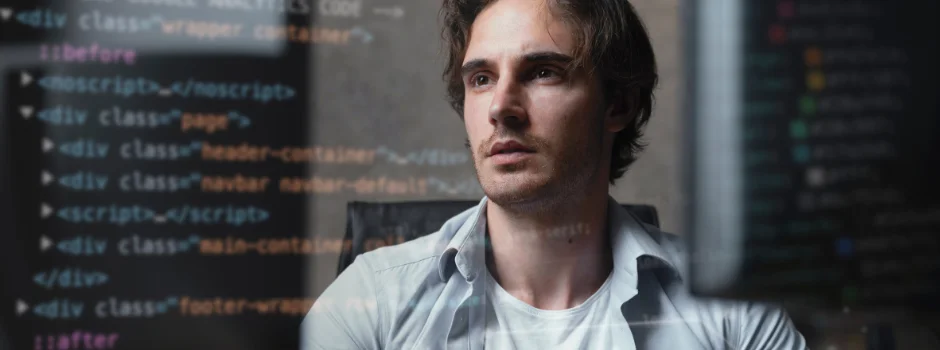
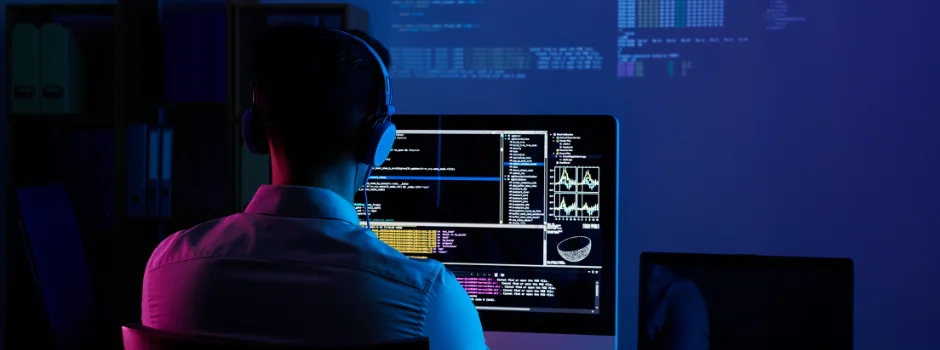
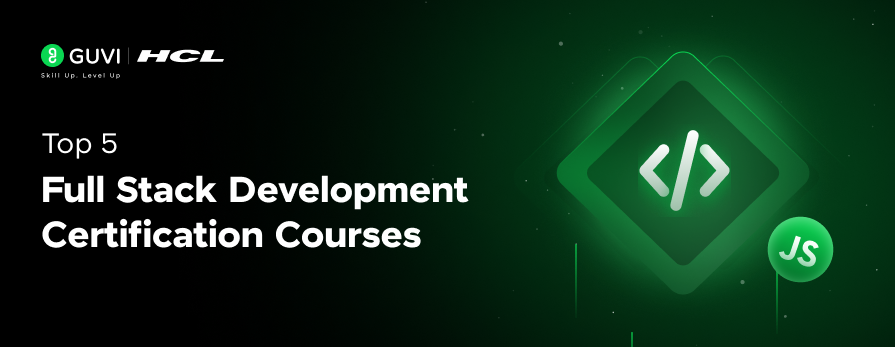

![Top Frontend Developer Skills: A Beginner's Guide [2025] 12 frontend developer skills](https://www.guvi.in/blog/wp-content/uploads/2023/03/Top-Frontend-Developer-Skills-A-Beginners-Guide.png)
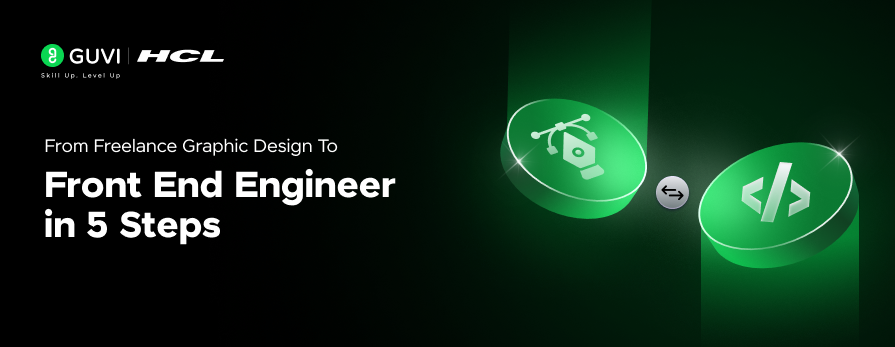
![Top 10 React Native Project Ideas [With Source Code] 14 React Native Project Ideas](https://www.guvi.in/blog/wp-content/uploads/2024/10/React_Project_Ideas.png)
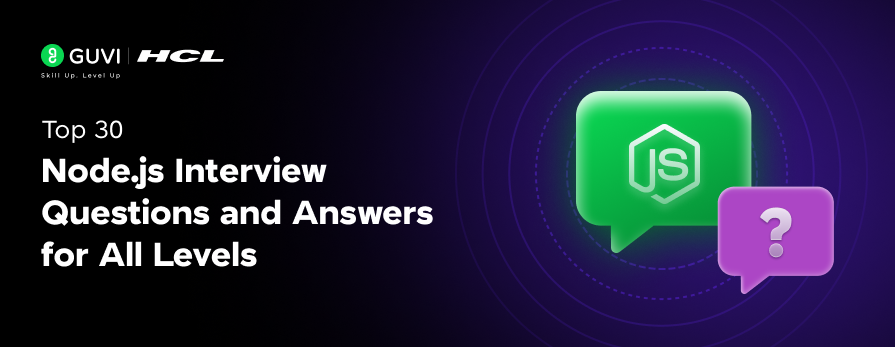
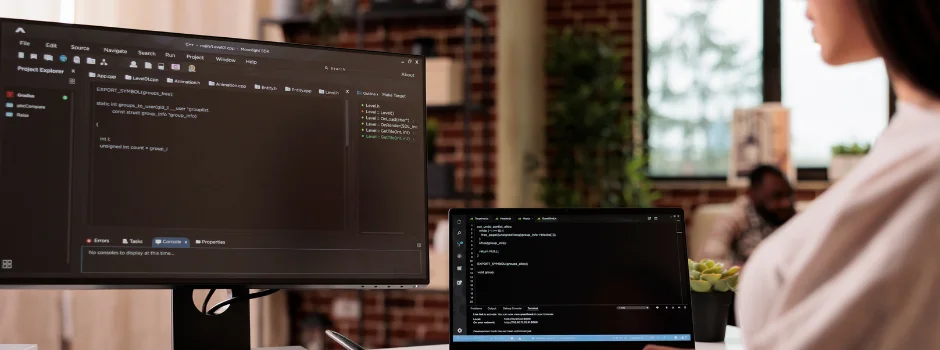

GOOD
Good
good I eager to learn web development in this platform
More helpful
It was precise and clear.